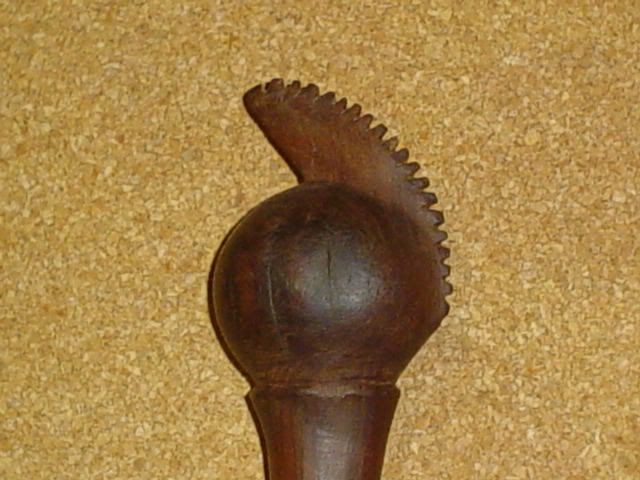
 |
|
|
|
|
#1 |
|
Member
Join Date: Dec 2004
Location: Houston, TX, USA
Posts: 1,254
|
On this last one, note the resemblance to an axe handle.
|
|
|

|
|
|
#2 |
|
Member
Join Date: Dec 2004
Location: Sint-Amandsberg (near Ghent, Belgium)
Posts: 830
|
You're right, Tom. But it lacks the holes needed for fitting the blade.
The decoration goes all round the head of the club and there are no signs that it was meant to be an axe handle. |
|
|

|
|
|
#3 |
|
Member
Join Date: Dec 2004
Location: What is still UK
Posts: 5,939
|
Hello Freddy, this one is a bit further to the east and the lakes,{Nyamwezi ?}
|
|
|

|
|
|
#4 |
|
Member
Join Date: Dec 2004
Location: Sint-Amandsberg (near Ghent, Belgium)
Posts: 830
|
I think your right, Tim. It's definitively East-African. But are you sure about Nyamwezi ? Could also be Gogo. This tribe has a vast array of clubs.
Here is one that also comes from the same region, but I don't know from which tribe (probably also Gogo).   This is probably some kind of ceremonial club, although it's heavy enough to deliver a painful blow. A lot is written about African weapons, mostly about the iron work. A good book only dealing with wooden weaponry from Africa would be welcome. |
|
|

|
|
|
#5 |
|
Member
Join Date: Dec 2004
Location: What is still UK
Posts: 5,939
|
Hi Freddy, this must also be Gogo.More to post latter.Tim
|
|
|

|
 |
|
|